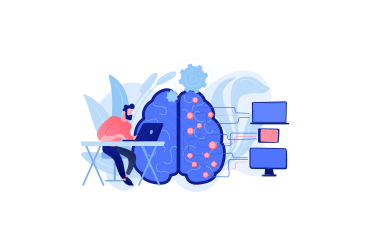
 Apr 28, 2022
Apr 28, 2022
It is helpful for companies to look at AI in terms of business capabilities rather than technologies, and in general, AI can support three critical business needs: automating business processes, gaining insight through data analysis, and interacting with customers and employees.
The most common type is the automation of digital and physical tasks - usually back-office administrative and financial activities - using robotic process automation techniques. Entering and consuming information from multiple IT systems. Tasks include:
Transferring data from email and call center systems to registration systems - for example, updating customer files with address changes or service additions.
Replace lost credit or debit cards, and access multiple systems to update records and handle customer communications.
Reconcile failures to charge for services across billing systems by extracting information from multiple document types; and reading" legal and contractual documents to extract judgments using natural language processing.
RPA is the least expensive and easiest to implement cognitive technology, and it usually yields a fast and high return on investment. (They are also the least "smart" in the sense that these apps are not programmed to learn and improve, even though developers are slowly adding more intelligence and learning capabilities.) They are particularly suited to working across multiple backend systems.
The second most popular type of project uses algorithms to detect patterns in massive amounts of data and interpret their meaning, so think of it as "analytics".
These machine learning applications are used to:
Predict what a particular customer is likely to buy.
Real-time credit fraud identification and insurance claims fraud detection.
Analyze warranty data to identify safety or quality problems in automobiles and other manufactured products.
Automating custom targeting for digital ads; Providing insurance companies with more accurate and detailed actuarial modeling.
The cognitive insights that machine learning provides differ from those available from traditional analytics in three ways: they are usually more data-intensive and detailed, models are usually trained on a portion of the data set, and models improve—that is, their ability to use new data to make predictions or Classification of things over time.
Companies tend to use knowledge-sharing techniques to interact with employees more than with customers, and this may change as companies become more comfortable turning customer interactions into machines.
Some companies are experimenting with a smart agent that helps their customer service staff answer frequently asked questions, and eventually the plan is to allow customers to interact with the knowledge agent directly, rather than with human customer service agents.
But despite their rapidly expanding expertise in knowledge tools, companies face significant hurdles in development and implementation.
Before embarking on an AI initiative, companies must understand the technologies that perform the types of tasks and the strengths and limitations of each. Rules-based expert systems and robotic process automation, for example, are transparent in how they do their work, but neither can learn and improve.
On the other hand, deep learning is great for learning from large amounts of labeled data, but it's almost impossible to understand how to model it.